As someone who held a Fisker preorder, I was truly saddened to see that on March 27th 2024 Fisker published this ominous press release which almost certainly signals an impending bankruptcy:
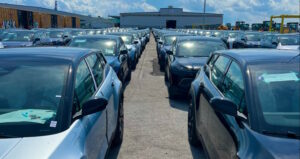
Fisker Inc. (“Fisker”), driven by a mission to create the world’s most emotional and sustainable electric vehicles, today announced reductions in Manufacturer’s Suggested Retail Price (MSRP) on many model year 2023 Fisker Oceans in the US. Fisker is lowering the MSRP of the 2023 Ocean Extreme trim by $24,000, to $37,499 from $61,499 MSRP.
In addition, The 2023 Ultra trim will be priced at $34,999 MSRP, reduced from the current $52,999; and the 2023 Sport will be priced at $24,999 MSRP, reduced from the current $38,999.1
All reduced-MSRP Fisker Ocean trims are 2023 models, with Fisker’s latest 2024 Ocean OS software version 2.0 installed. Certain Ocean vehicles come equipped with as much as $7,000 worth of additional options – such as colors, 22” wheels, interiors, and other options – included in the discounted price. MSRP reductions on 2023 model year vehicles will go into effect Friday, March 29, 2024.
https://investors.fiskerinc.com/news/news-details/2024/Fisker-Announces-Reduced-MSRP-in-U.S.-on-Many-2023-Model-Year-Vehicles/default.aspx
It’s still a bit early declare Fisker Inc dead, but it’s definitely on life support. So what went wrong at Fisker this time?
The Brilliance of a Virtual Car Company
After two previous Fisker failed car companies, Henrick had learned that the most difficult part of manufacturing a vehicle, is the manufacturing. So in his third venture, Fisker Inc, he wisely invented what he called the world’s first virtual car company which had all of its manufacturing outsourced to a global automotive powerhouse, Magna International.
Having Magna build these vehicles would not only save Fisker billions of dollars up front, it would also ensure that the vehicles are assembled properly and avoid what Elon Musk calls production hell.
Magna does none of the design work but all of the assembly for many moderate volume notable vehicles including the Toyota Supra, the BMW Z4 and most notably the Mercedes G Wagon. All of this work is done at the Magna Steyer factory in Austria and that is where the Fisker Ocean was built.
Henrik Fisker’s Design Credentials
I don’t think anyone would try to deny Danish born automotive designer Henrik Fisker’s design prowess. He may not fall into the genius camp, but the man has talent. These are just the highlights of his notable career:
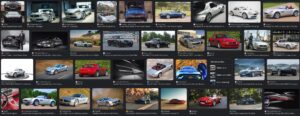
- BMW Z8 (2000–2003): During his tenure at BMW, Fisker played a pivotal role in designing the BMW Z8 roadster. This iconic sports car combined timeless design and powerful performance made it a standout in the automotive world.
- Aston Martin DB9 (2004–2016): Fisker served as the Design Director at Aston Martin, where he was responsible for the production design of the Aston Martin DB9. This luxury grand tourer seamlessly blended elegance, performance, and craftsmanship.
- Aston Martin V8 Vantage (2005–present): Fisker also designed the Aston Martin V8 Vantage, which became the best-selling Aston Martin of all time. BBC’s “Top Gear” named it the coolest car of the year in 2005.
- Fisker Tramonto (2005): After leaving Aston Martin, Fisker partnered with Bernhard Koehler to start Fisker Coachbuild. Their first creation was the Fisker Tramonto, a roadster based on the Mercedes-Benz SL 55 AMG. Only a few of these exclusive vehicles were ever built, showcasing Fisker’s commitment to luxury and unique design.
- Fisker Karma (2011): Fisker founded Fisker Automotive in 2007, aiming to create environmentally friendly yet luxurious cars. The Karma was one of the world’s first production luxury plug-in hybrid electric vehicles. Its striking design, extended range, and eco-conscious features garnered attention worldwide.
- Fisker Ocean: Henrik Fisker’s latest venture is Fisker Inc., where he continues to push the boundaries of electric vehicle design. The Ocean electric SUV, combines aesthetics with environmental consciousness.
What Went Wrong At Fisker?
Great Design + Professional Assembly = Hugh Success?
That was the math sold to Fisker investors, and it made alot of sense, but simply having compelling designs that can more than competently be assembled is only a part of the automotive business. In fact having an excellent product is only part of any business.
There are three things that seem to have driven Fisker over the edge for a third time, and all of them relate to the boring “business” part of the business:
1 – Fixing Technical Problems
At first glance, the Fisker Ocean appears to be an attractive, solid vehicle, with plenty of high end tech. If you watch any reviews of the vehicle however, you will see drivers explain that the vehicle “ghost” brakes, has serious infotainment flaws, and sometimes will refuse to move at all because it thinks there’s something wrong with an important control unit. All of these problems are likely resolvable with cheap over the air software updates, but they are not sexy or fun to deal with.
2 – Manufacturing & Transportation Logistics
For a comparison, lets look at an incredibly well financed EV start up also with a premium product. Lucid produced just 4369 vehicles (2022) in their first year and 6001 in their second year (2023). 100% of these were sold and delivered to customers.

As of todays date, Fisker has about 4700 Fisker Oceans stuck in Europe with no buyers. Keep in mind that isn’t the number that was produced, that’s the number he didn’t sell. That’s a lot of product and so that is alot of money.
Fisker needed to manage production to match sales, and then to get those vehicles to market (mostly in the United States). Again, logistics is not a very sexy part of any company.
3 – Keeping Track of the Money
Another leak from a Fisker insider indicated that Fisker Finance was not tracking lease payments properly. They apparently couldn’t match client payments with client vehicles and not infrequently just didn’t take payments. One analyst said he was told that Fisker owners were telling him, Fisker was not ‘cashing their checks’.
Just watch this segment of Autoline After Hours:
While the big money part of the auto industry might seem appealing to some, it just isn’t going to serious attention of someone who is focuses on design.
Who’s To Blame For Fisker’s Failure?
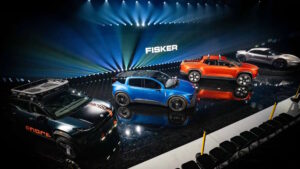
Henrik Fisker was spending a lot of time on design nuances for new vehicles like Rōnin, Pear, and Alaska. All of those are fun and sexy. They’ll keep any designer interested.
Compare that to Elon Musk’s EV startup Tesla. Tesla focused on one vehicle for years at a time. Tesla release schedule was:
- 2008 Roadster (v1)
- 2012 Model S
- 2015 Model X
- 2019 Model 3, and its oversize twin, the Model Y
Each of these vehicles had major development, design and production hurdles but by dealing with them one at a time Tesla was able to be successful. Other EV startups like Rivian and Lucid, who are likely to survive the coming EV bloodbath are following this same simple formula.
In the end, the failure of Fisker will almost certainly be blamed on the traditional business boogeyman, which is a lack of cash. Fisker certainly could have survived if it had the same kind of funding as either Rivian or Lucid, but that’s really not the cause.
Put simply, Fisker forgot the boring business part of the car business. I’m sure the word “forgot” is too harsh. He certainly didn’t forget about it, he just didn’t put enough focus on it.
Obviously, Henrik Fisker did much better with this incarnation than his previous two failed car companies, but he should have known that he would become intoxicated with the allure of blank slate design, needed to hire forceful management to take care of the “business” part of his car business.
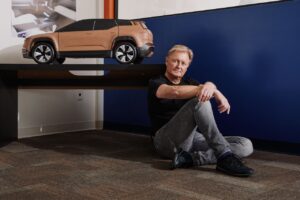
The vehicles Fisker produced look great and could be actually been great with more money and time, but if you can’t manage production, shipping and money, the business is doomed.
Ultimately, the Board of Directors is responsible for the control of any business, but Henrick Fisker was both CEO and Chairman of the Board so it seems there’s no other place to lay blame, except with Henrik Fisker himself.
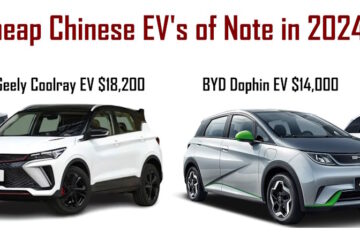

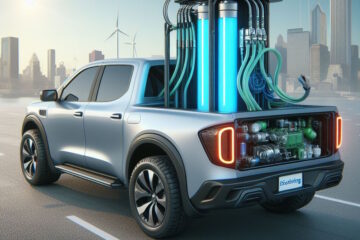
1 Comment
Laura · April 13, 2024 at 11:12 pm
I love Fiskers story and the Ocean, but I would not buy one right now. Hopefully some experienced car company with deep pockets buys them out and keeps this amazing story alive.